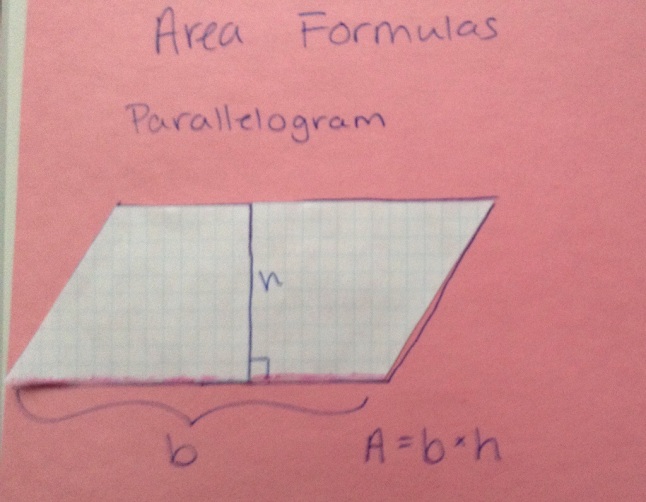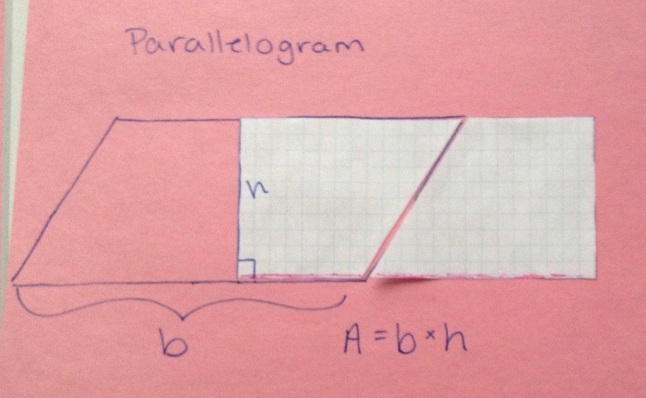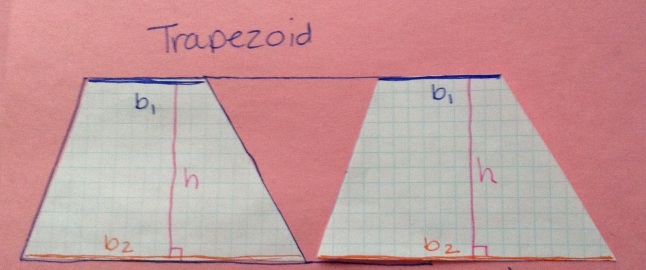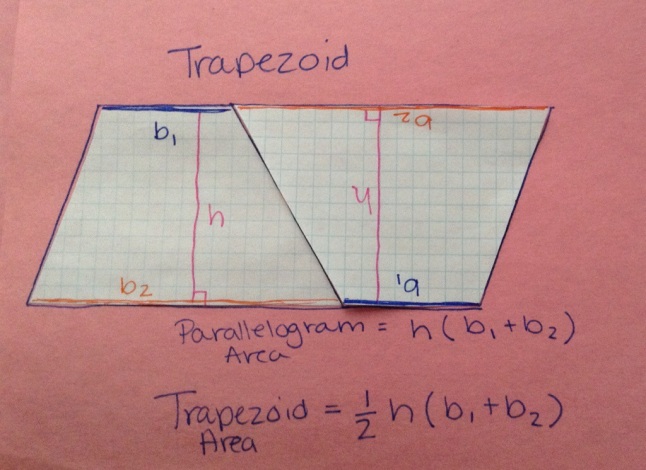I find that by 7th grade, students can generally rattle off a few area formulas like base x height and half base x height and so on. Often times times they mix up which polygon the formula goes with. And rarely do I think students know where the formula came from. I always prefer my students know HOW to find a formula over actually knowing the formula itself. If we’re lucky, teaching where the formula comes from might accomplish both!
Warm up
Students cut out 1 rectangle, 1 triangle, 1 parallelogram, and 2 congruent trapezoids from graph paper. I ask them to make the bases and heights whole numbers. Also, you may want to cover how to make sure their parallelogram has parallel slant sides.
Deriving the Formulas
I spent some time with my 7th graders talking about how to find the area of a polygon. We started with the basics, a rectangle. But instead of asking for the formula, I asked them how they would tell a 1st grader who couldn’t multiply to find the area of the rectangle they had cut out. After hearing all the responses, then I asked the students how they, a 7th grader, would find the area. They were all very sure the area equals base times height, A=b x h. Once we had that down, we could work on the other polygons.
Our goal was to turn the remaining polygons into a shape that we already had an area formula for, like a rectangle. We next looked at our triangles. Students should label the base and height on their shape.
Students can cut the triangles, but the area doesn’t change. So once the triangles are cut, they can be reconfigured to be a rectangle with half the height and the same base as the original, or vice versa. Some triangles are much easier to make into a rectangles, like a right or isosceles triangle, but you can still make it work with any triangle as can be seen in the pictures below. Once the rectangles were formed, we wrote out the area formula for each triangle and found it would always be 1/2 b x h.
Next we moved on to parallelogram which is pretty straightforward. I asked the students to cut along the height and then to try to rearrange the shapes into a rectangle. They got it pretty quickly. They also recognized that the dimensions of the new rectangle were the same as those of the parallelogram so again the area was equal to b x h.
Last but not least, we got to the trapezoid, the trickiest of the all! You can cut a trapezoid into pieces that will form a rectangle but it is definitely harder to walk the students through. So instead we used the formula for the area of a parallelogram. I asked students to arrange their two congruent trapezoids into a shape we knew the area for.
I didn’t tell them to make a parallelogram but they figured it out. We wrote out the area for the parallelogram we made. From there, it was easy to see the area of the trapezoid was half of that, thus…
And ta-da! We’ve found the formulas for the area of a rectangle, triangle, parallelogram, and trapezoid!






